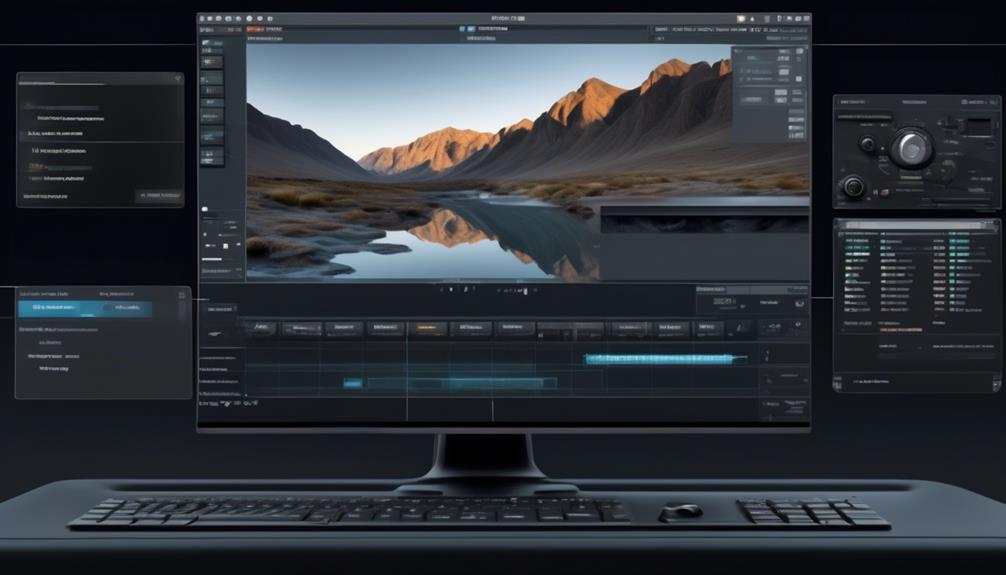We have encountered a small issue with our recorded calls not appearing, which has been puzzling for us.
It's frustrating, I know, but there are a few potential reasons for this that we need to explore. From app compatibility issues to storage space constraints, or even permissions snags, there's quite a bit to consider.
Stick around to uncover the potential causes and some troubleshooting tips to get those elusive recorded calls back on track.
Key Takeaways
- Incompatible call recording apps can cause issues with call recordings. Updating the app to a version that is compatible with the device's specifications may resolve the problem.
- Insufficient storage space on the device can prevent call recordings from being saved. Clearing unnecessary files and data, transferring recordings to a different storage location, and regularly monitoring storage space can help free up space.
- Disabled call recording permissions can affect the functionality of call recording apps. Checking and enabling the necessary permissions for the app is important for successful call recording.
- Software or operating system issues can interfere with call recording. Lack of necessary permissions, bugs in the phone app, and regulations prohibiting call recording can all impact the functionality of call recording apps.
Incompatible Call Recording App
When encountering issues with recorded calls not showing up, it's crucial to consider the possibility of an incompatible call recording app causing the problem. Incompatibility issues can arise if the call recording app isn't optimized for the specific Android version or device model being used. This can result in the app failing to capture and display recorded calls properly.
To address this, ensure that the call recording app is compatible with the Android version installed on the device. Additionally, verify if the app is designed to work seamlessly with the specific device model. Updating the call recording app to a version that's compatible with the device's specifications may resolve the issue of recorded calls not showing up.
It's important to note that using third-party call recording apps may also contribute to compatibility issues. Some third-party apps may not fully integrate with the device's native call recording functionality, leading to inconsistencies in call recording visibility. In such cases, consider using the native call recording feature, if available, or switch to a call recording app that's known to be compatible with the device and Android version in use.
Insufficient Storage Space

We must address the issue of insufficient storage space on the device, as it can hinder the saving of call recordings. When the available storage space is limited, the call recorder app may encounter difficulties in creating new recordings, leading to the 'Call Recorder Not Recording' issue.
To resolve this, we can start by clearing unnecessary files and data from the device. This can be achieved by removing temporary files from other apps or system processes that might be consuming a significant amount of space.
Additionally, consider transferring existing recordings to a different storage location, such as a cloud service, to free up space for the recording function to work efficiently.
Another effective approach is to regularly monitor the storage space on the device and uninstall unused apps or media files to ensure an adequate amount of free space is always available.
Disabled Call Recording Permissions
Addressing the issue of insufficient storage space is pivotal in understanding the implications of disabled call recording permissions, as it directly impacts the functionality of call recording apps.
When call recording permissions are disabled on an Android phone, the phone app is unable to access the necessary features to record calls. This can occur on older Android devices or in regions with strict call recording laws, where permissions may be disabled by default.
As a result, users may experience issues with call recording apps not functioning properly or recorded calls not showing up in the app. It's important to check the permissions settings for the call recording app and ensure that the necessary permissions are enabled to allow the app to record calls successfully.
Additionally, users should consider updating their Android devices to newer versions that support call recording permissions to avoid any potential issues with call recording functionality.
Software or Operating System Issues

Software limitations can impact the functionality of call recording apps on Android devices. Issues within the operating system or the call recorder app itself can lead to failed recordings. For instance, the call recorder app may not have the necessary permissions to access the phone's audio and record calls.
Additionally, if the phone app has bugs, especially when using a beta version of the Android OS, it can interfere with the call recording process. Moreover, some countries have regulations that prohibit call recording, leading to restrictions on the use of call recorder apps.
Furthermore, temporary files cluttering up the cache of the Phone app can hinder call recording by consuming the available storage space. It's also worth noting that Android devices running on Android 8 or lower may not fully support call recording due to limitations within the operating system.
Therefore, it's essential to ensure that both the software and operating system are compatible with the call recorder app, and that all necessary permissions are granted for seamless call recording functionality.
Call Recording File Corruption
Due to potential issues with call recording apps and the Android operating system, call recording file corruption can lead to the inability to access or play recorded calls on the device. When call recording files become corrupted, it can result in distorted audio or render the files completely unplayable.
The corruption of these files may stem from various factors such as problems with the recording app, storage issues, or conflicts within the device's software. To address call recording file corruption, several troubleshooting steps can be taken, including:
- Clearing the app's cache
- Updating the recording app to the latest version
- Checking for storage space availability
- Ensuring that the device's operating system is up to date
If these steps don't resolve the issue, seeking support from the app developer or technical support may be necessary to diagnose and address the underlying cause of the file corruption.
It's crucial to address call recording file corruption promptly to ensure the integrity and accessibility of recorded calls for future reference.
Frequently Asked Questions
Why Is Call Recording Not Showing?
Troubleshooting call recording involves several steps:
- Checking call recording settings: Ensure that the call recording feature is enabled in the phone settings. Some devices have a built-in call recording option that needs to be activated.
- Checking call recording software: If you are using a third-party call recording app, make sure it is up to date. Check for any available updates and install them if necessary.
- Checking call recording storage: Verify that you have enough storage space available on your device to save the recorded calls. If the storage is full, delete unnecessary files or transfer them to an external storage device.
- Checking call recording privacy: Ensure that the call recording app has the necessary permissions to access the microphone and storage. Go to the app settings and grant the required permissions if they are not already enabled.
- Checking legal requirements: In some countries, call recording is not allowed without the consent of all parties involved. Make sure that call recording is allowed by the country's law before using this feature.
In addition to the above steps, clearing temporary files cluttering up the cache of the Phone app can resolve visibility issues. However, please note that for Android devices running on Android 8 or lower, call recording may not be supported.
Where Did My Call Recording Go?
We can explore troubleshooting options for call recording file visibility issues. Storage issues or device compatibility might be the root cause. Privacy concerns could also impact the retrieval process. Checking permissions and app settings is crucial.
If the files aren't in the expected location, we might need to investigate further. It's important to ensure that the recording feature is compatible with the device and that the storage location is accessible.
How Do I Fix Call Recording Problem?
To troubleshoot call recording issues, there are several steps to follow:
- Ensure the app has proper permissions.
- Clear the phone app's cache.
- Check for legal restrictions.
Next, we need to verify if the device supports call recording and investigate any visibility issues. This can be done by:
- Adjusting call recording settings.
- Using compatible recording apps.
- Seeking tech support if necessary.
In cases where recordings are lost, we can explore retrieval options. By following these measures, we can effectively resolve call recording problems.
How Do I Access My Recorded Phone Calls?
We've mastered accessing recorded phone calls.
Troubleshooting potential issues includes:
- Checking permissions
- Device compatibility
- File visibility in the Recorder app or File Manager
Ensure proper storage management and consider privacy concerns.
Playback options are crucial for a seamless experience.
Remember to navigate legal regulations regarding call recording.
With these technical insights, accessing recorded calls becomes a breeze.
Conclusion
In the journey of call recording, we may encounter obstacles that obscure our path. Just as a ship navigates through stormy seas, we must navigate through bugs, permissions, and legal restrictions.
By updating, clearing, and checking our devices, we can clear the fog and reveal our recorded calls once more. Like a skilled captain, we can steer through these challenges and ensure our call recordings are always visible.










